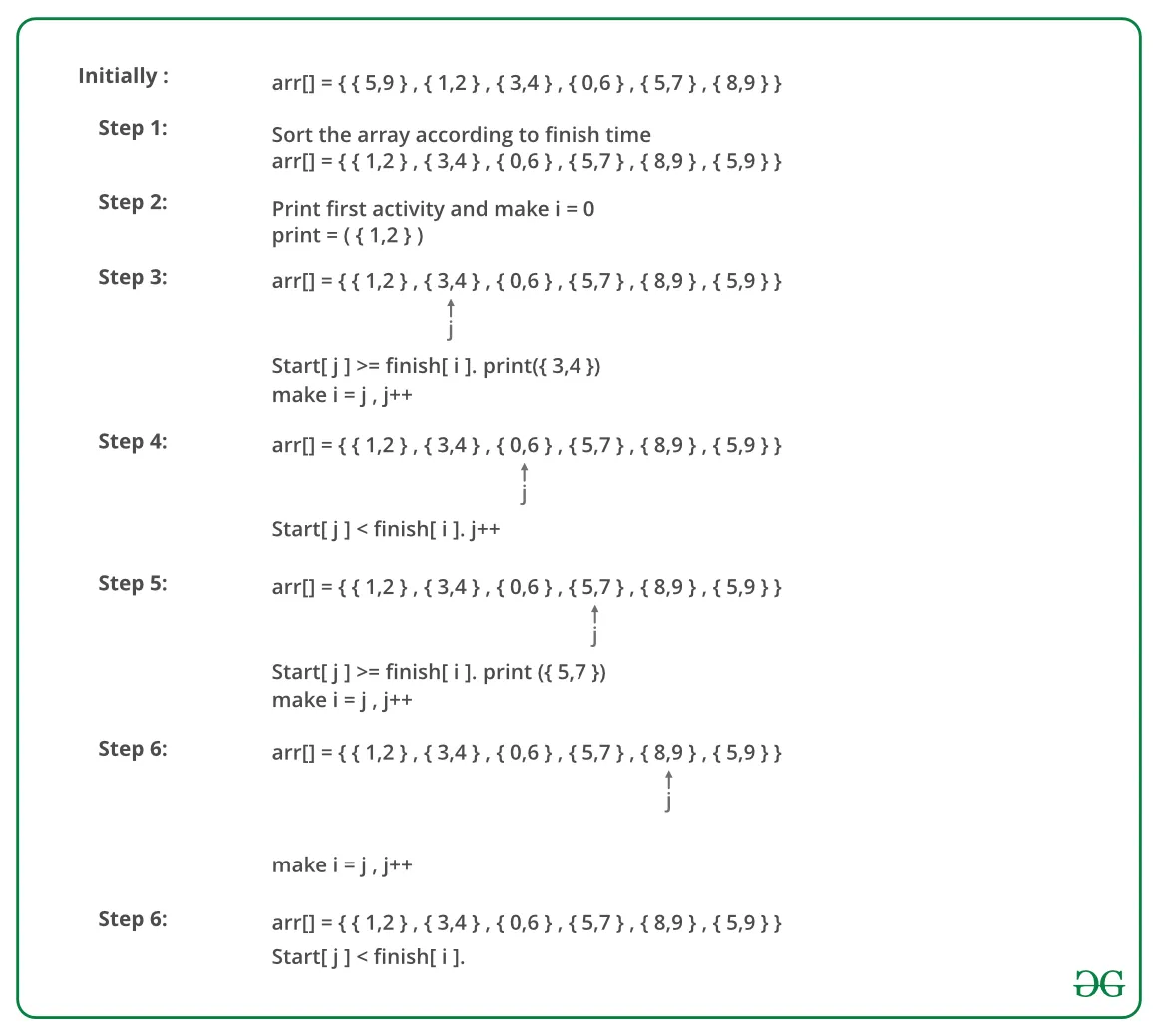Given two Strings **S **and **T **of length N consisting of lowercase alphabets, which are permutations of each other, the task is to print the minimum number of operations to convert S to T. In one operation, pick any character of the string S and move it either to the start or end of the string S.
Examples:
Input:_ S = “abcde”, T = “edacb”_
Output:_ 3_
Explanation:
We can convert S to T in 3 moves:
_1. move ‘d’ to start: “dabce” _
_2. move ‘e’ to start: “edabc” _
3. move ‘b’ to end: “edacb”
Input:_ S = “dcdb”, T = “ddbc”_
Output:_ 1_
Explanation:
Move ‘c’ to end
Recommended: Please try your approach on {IDE} first, before moving on to the solution.
Naive Approach: The naive approach is to try all possibilities of swapping a character. One can put some character to the front, to the end, or can leave it in the same position. The above three operations can be solved using recursionand print the minimum number of steps required after all the steps.
Time Complexity:_ O(3N), where N is the length of the given string._
Auxiliary Space:_ O(1)_
Efficient Approach: To optimize the above approach, the idea is to observe that after moving the characters of the string S, the unchanged characters come together to form a contiguous substring in T. So, if we can maximize the length of this subsequence, then the count of operations to convert string S to T is:
N – length of the longest contiguous substring of T that is a subsequence of S
Therefore, to find the length of the longest contiguous substring of T that is a subsequence of string S, find the longest common subsequence of S and T. Let dp[][] stores the length of the longest contiguous substring of T that is a subsequence of string S, . Now dp[i][j] will store the length of the longest suffix of T[0, …, j] that is also a subsequence of S[0, …, i]. The recurrence relation is given by:
- if i is greater than 0, dp[i][j] = max(dp[i-1][j], dp[i][j])
- if S[i] is equals to T[i] then, dp[i][j] = 1 + dp[i-1][j-1]
Below is the implementation of the above approach:
- C++
// C++ program for the above approach
#include <bits/stdc++.h>
**using** **namespace** std;
**int** dp[1010][1010];
// Function that finds the minimum number
// of steps to find the minimum characters
// must be moved to convert string s to t
**int** solve(string s, string t)
{
**int** n = s.size();
// r = maximum value over all
// dp[i][j] computed so far
**int** r = 0;
// dp[i][j] stores the longest
// contiguous suffix of T[0..j]
// that is subsequence of S[0..i]
**for** (``**int** i = 0; i < n; i++) {
**for** (``**int** j = 0; j < n; j++) {
dp[i][j] = 0;
**if** (i > 0) {
dp[i][j] = max(dp[i - 1][j],
dp[i][j]);
}
**if** (s[i] == t[j]) {
**int** ans = 1;
**if** (i > 0 && j > 0) {
ans = 1 + dp[i - 1][j - 1];
}
// Update the maximum length
dp[i][j] = max(dp[i][j], ans);
r = max(r, dp[i][j]);
}
}
}
// Return the resulting length
**return** (n - r);
}
// Driver Code
**int** main()
{
// Given string s, t
string s = "abcde"``;
string t = "edacb"``;
// Function Call
cout << solve(s, t);
**return** 0;
}
Output:
3
Time Complexity:_ O(N2), where N is the length of the given string_
Auxiliary Space:_ O(N2)_
Note: The above naive approach is efficient for smaller strings whereas, the above efficient approach is efficient for larger strings.
Attention reader! Don’t stop learning now. Get hold of all the important DSA concepts with the DSA Self Paced Course at a student-friendly price and become industry ready.
#dynamic programming #strings #lcs #substring
